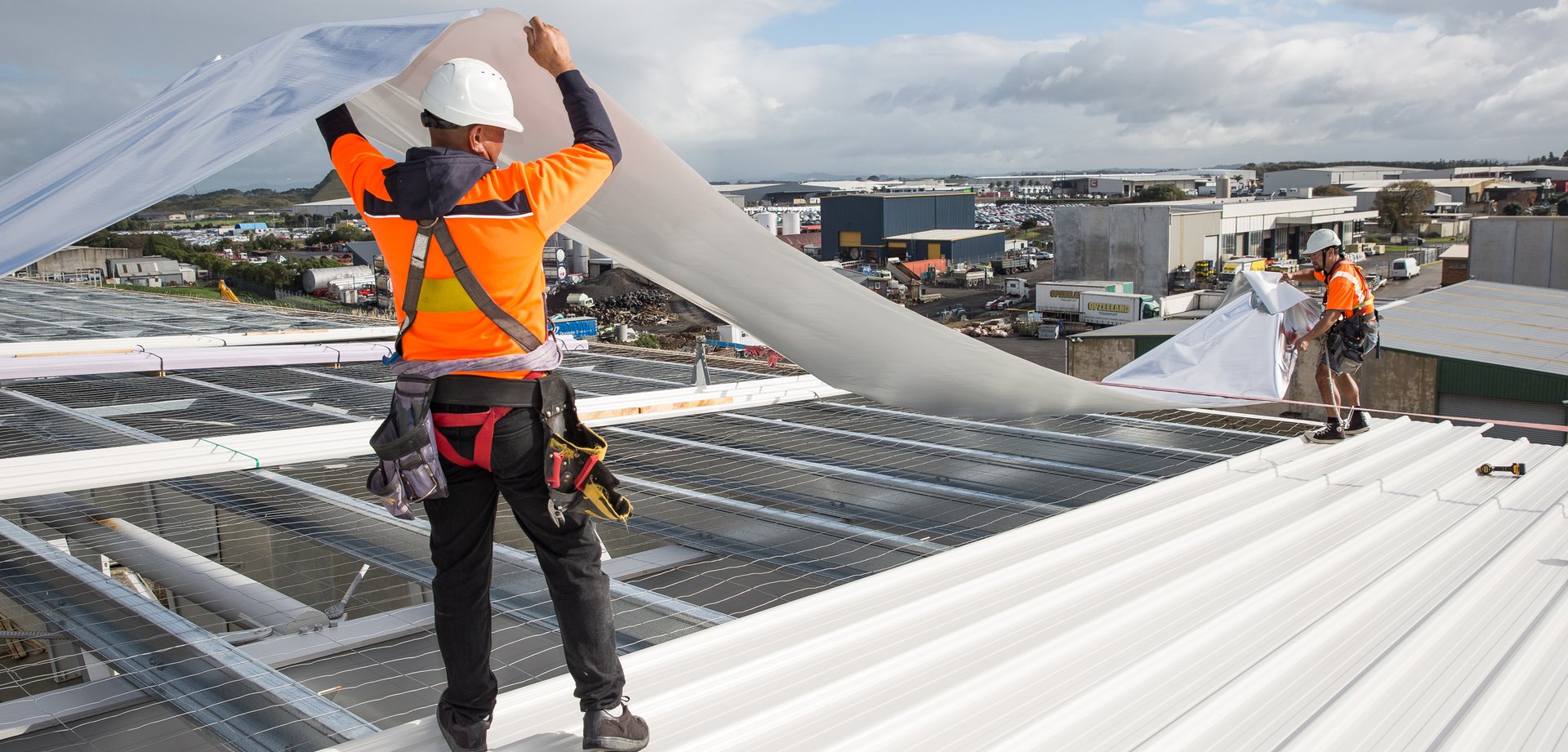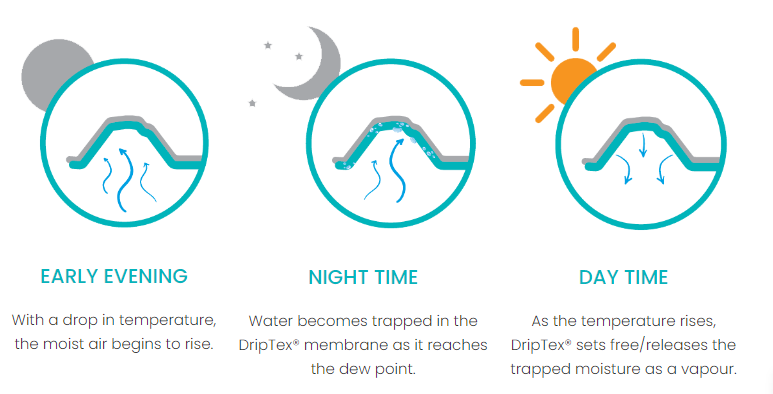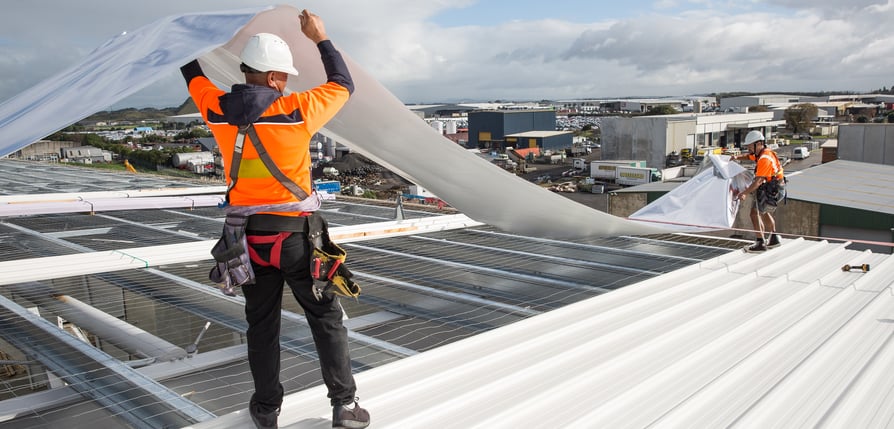
Adhesive underlay membrane VS Paper & Netting
A condensation barrier is an important part of any building/shed. It provides an absorbent layer that manages condensation during colder parts of the day and releases the condensation when temperatures rise.
When building a shed, there are two main options for a condensation barrier , an adhesive underlay membrane or a more traditional paper and netting.
Both options have key features to consider, See below.
Adhesive underlay membrane
Adhesive underlay membrane absorbs accumulating moisture from the roof cavity and then releases it when conditions improve, delivering superior condensation absorption and enhanced ventilation.
Key Features
-
Reduces installation time.
-
Installation is less affected by wind, reducing down-time.
-
Increases roof space ventilation.
-
Greater absorption than conventional underlays

Paper & netting

Pros
-
Cost-effective: Paper and netting materials are generally inexpensive compared to other construction materials, such as Dridex. This makes them a cost effective choice for temporary structures or projects with budget constraints. However delays in install Compared to adhesive underlay membrane can often offset any material cost savings.
-
Accessibility: Paper and netting are widely available materials, and don’t have the lead times of adhesive underlay membranes. This accessibility can be crucial if the project is timebound.
Cons
-
Fragility: Paper is relatively fragile and can tear easily, especially when exposed to moisture. This limits its use in certain applications where Durability is crucial.
-
Susceptible to water damage: Paper is highly absorbent and prone to damage from water, making it unsuitable for outdoor use or in environments with high humidity.
-
Perishability: Over time, paper can deteriorate and become yellow or brittle, affecting its appearance and structural integrity.